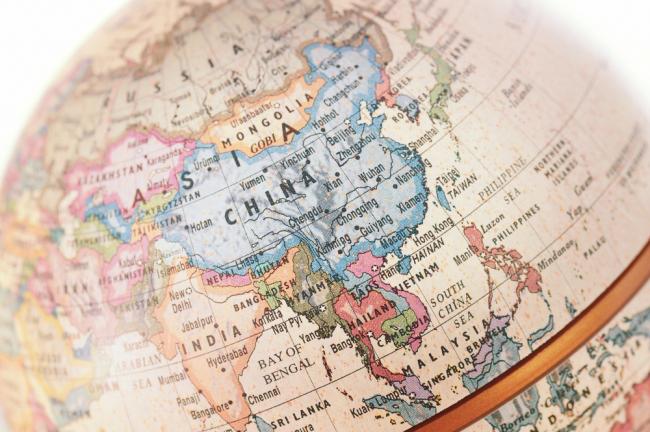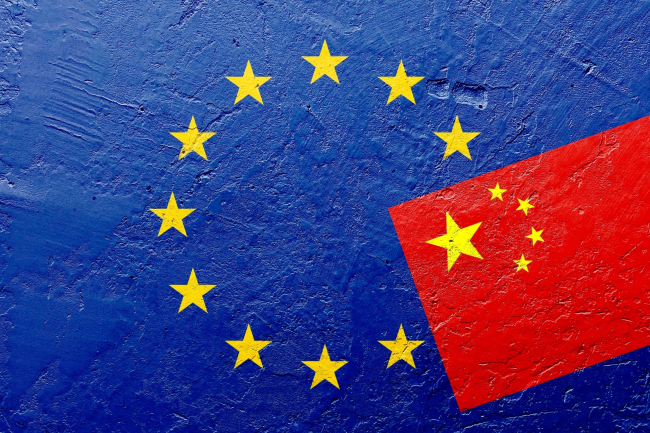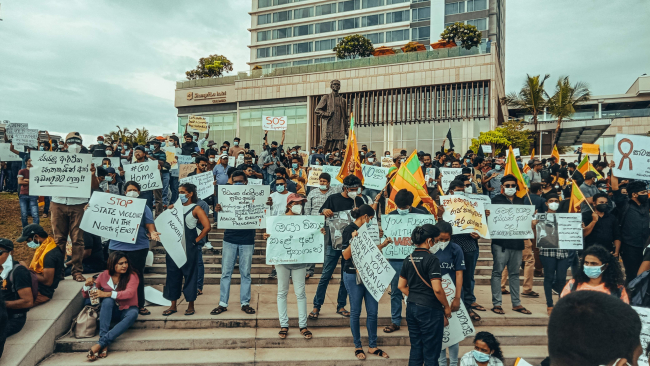75 millions de nouveaux pauvres en Inde: le modèle de développement indien à l’épreuve du COVID-19
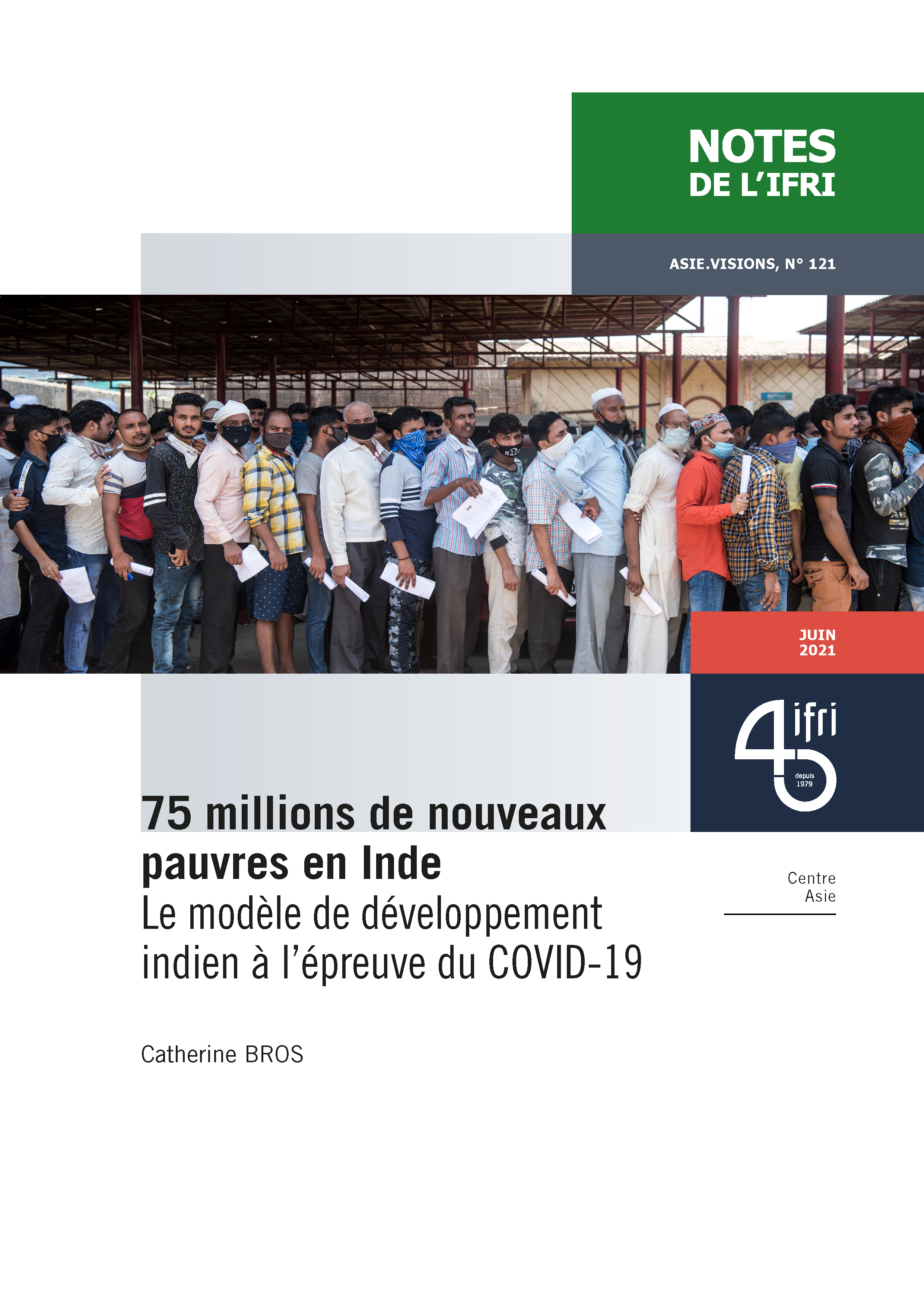
The pandemic has revealed the fragility of the Indian economy.
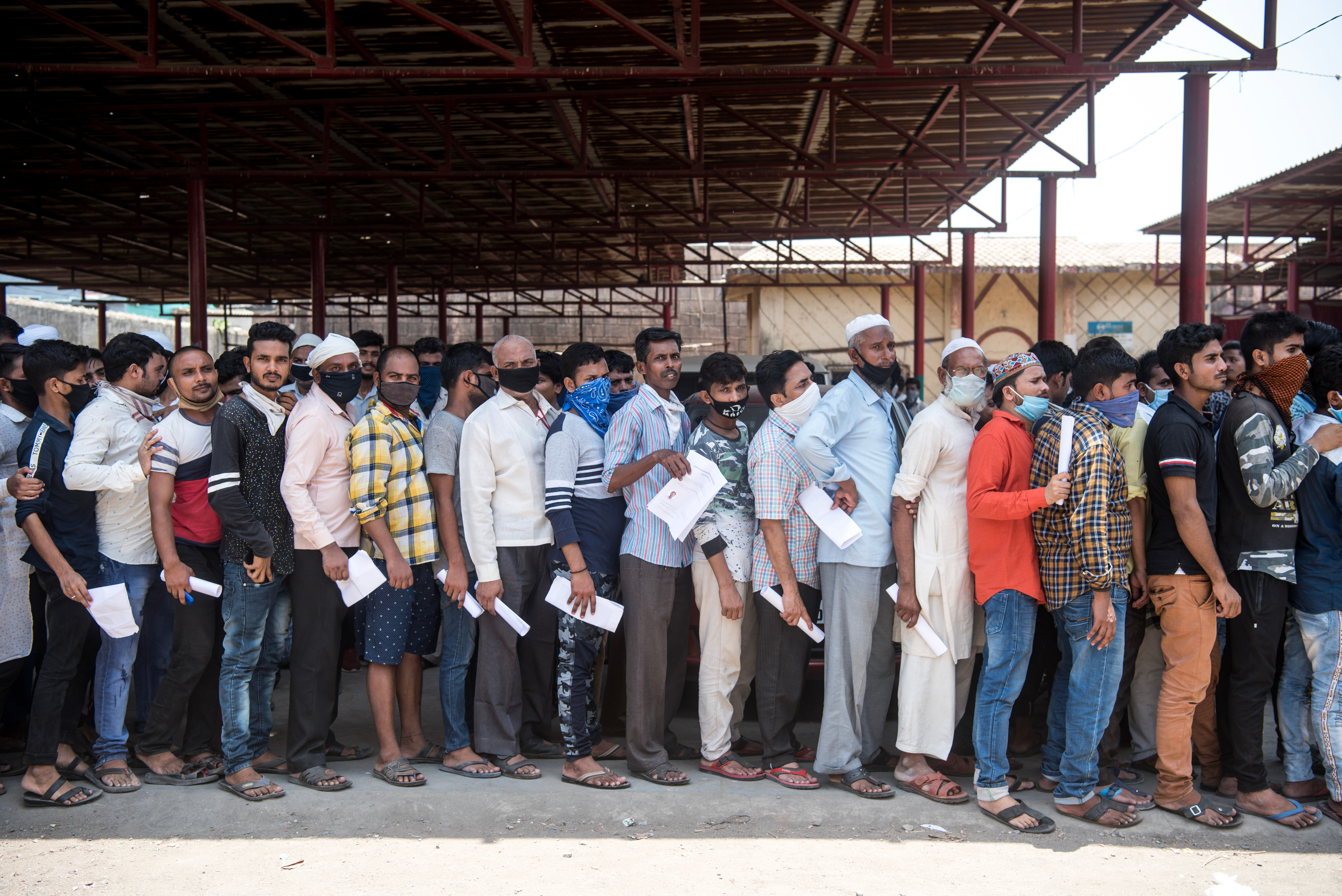
In March 2020, the Indian government implemented one of the most stringent lockdowns in the world in response to the global spread of the COVID-19. Economic activity was put on hold for more than two months, depriving of their livelihoods more than three fourths of the population that do not benefit from any form of social protection. We estimate that income losses due to the lockdown pushed 75 million individuals back into poverty which is a major setback given that the high and sustained growth of the last twenty years, 6% per annum on average, succeeded in reducing the number of poor by 248 million.
COVID-19 unveiled the fragility of the Indian economy, whose growth has been mainly driven by skill-intensive sectors that have not managed to absorb the large number of new entrants on the labor market, while manufacturing has remained under-developed for historical reasons. The inter-sectoral transfer of labor has been hampered by the constraints on the industrial sector whose size is abnormally small for such a large economy. Most of the population still lives on agriculture that only contributes to 16% of the value-added. Moreover, a large set of constraining regulations, particularly on labor, encouraged production units to remain small and, more often than not, family-based: more than half of the labor force is either self-employed or work in the family business while only 10% work as regular wage employees. The workforce is therefore greatly exposed to shocks and can hardly rely on safety nets.
In June 2020, Narendra Modi announced the release of an economic stimulus package that aims more at pursuing the Make in India industrial strategy set up in 2014 than cushioning the effects of the lockdown. The objective of the Atmanirbhar Bharat (Self-Reliant India) is to foster India’s integration into world commercial exchanges, while protecting its internal market, although future trends in global trade remain uncertain as some countries may be inclined to resort to protectionism as well. In any event, India’s short term growth prospects rely heavily on its internal demand that had already shown signs of weaknesses in 2019, leading to worse than anticipated growth rates. The increase in poverty due to the lockdown will weigh heavily on India’s capacity to restore strong sustainable growth.
The full text of this paper is only available in French: 75 millions de nouveaux pauvres en Inde : le modèle de développement indien à l’épreuve du COVID-19
Related centers and programs
Discover our other research centers and programsFind out more
Discover all our analyses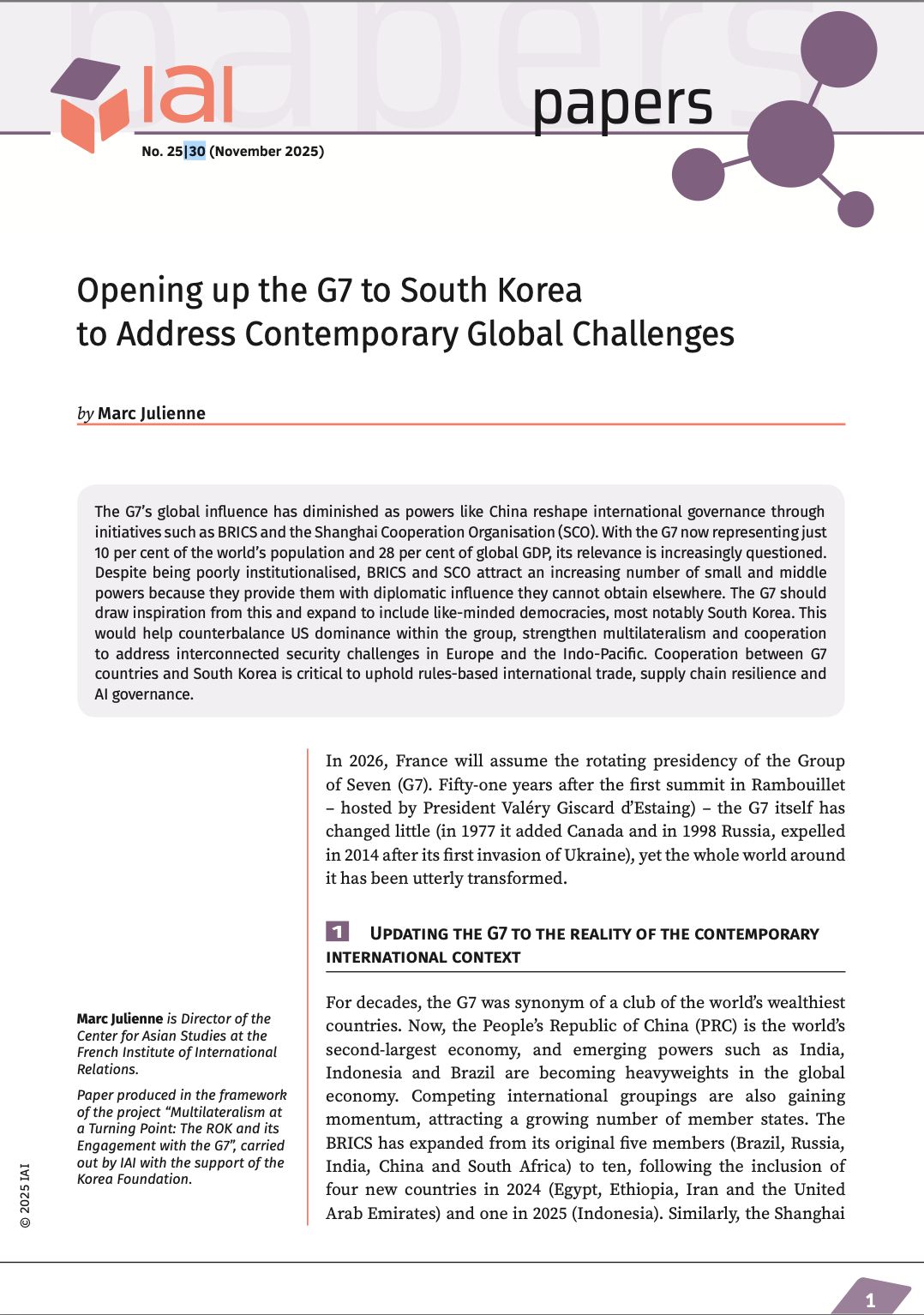
Opening up the G7 to South Korea to Address Contemporary Global Challenges
The G7’s global influence has diminished as powers like China reshape international governance through initiatives such as BRICS and the Shanghai Cooperation Organisation (SCO). With the G7 now representing just 10 per cent of the world’s population and 28 per cent of global GDP, its relevance is increasingly questioned.
Expanding SPDMM as a pivotal institution in the Pacific – A French perspective
The South Pacific Defence Ministers’ Meeting (SPDMM) is the only forum that brings together defense ministers from the wider South Pacific — including Chile, which is hosting it for the first time. This heterogeneous group of countries with varying resources, capacities, and interests — Australia, Chile, Fiji, France, New Zealand, Papua New Guinea (PNG), and Tonga — are united by their shared determination to strengthen cooperation on maritime security and humanitarian assistance and disaster relief (HADR) activities.
EU’s Derisking From China: A Daunting Task
With economic security as a major concern, the EU has recently turned to “derisking” from China. The EU strategy entails reducing critical dependencies and vulnerabilities, including in EU supply chains, and diversifying where necessary, while recognizing the importance and need to maintain open channels of communication.
Sri Lanka’s NPP Government. From System Change to Structural Compliance
In September 2024, a relative outsider to Sri Lanka’s two-party-dominated political system, Anura Kumara Dissanayake, won the presidential elections. The anti-establishment, populist movement he represented, the National People’s Power (NPP), went on to receive an overwhelming mandate in the November 2024 general elections, winning 159 seats in a 225-member parliament.






